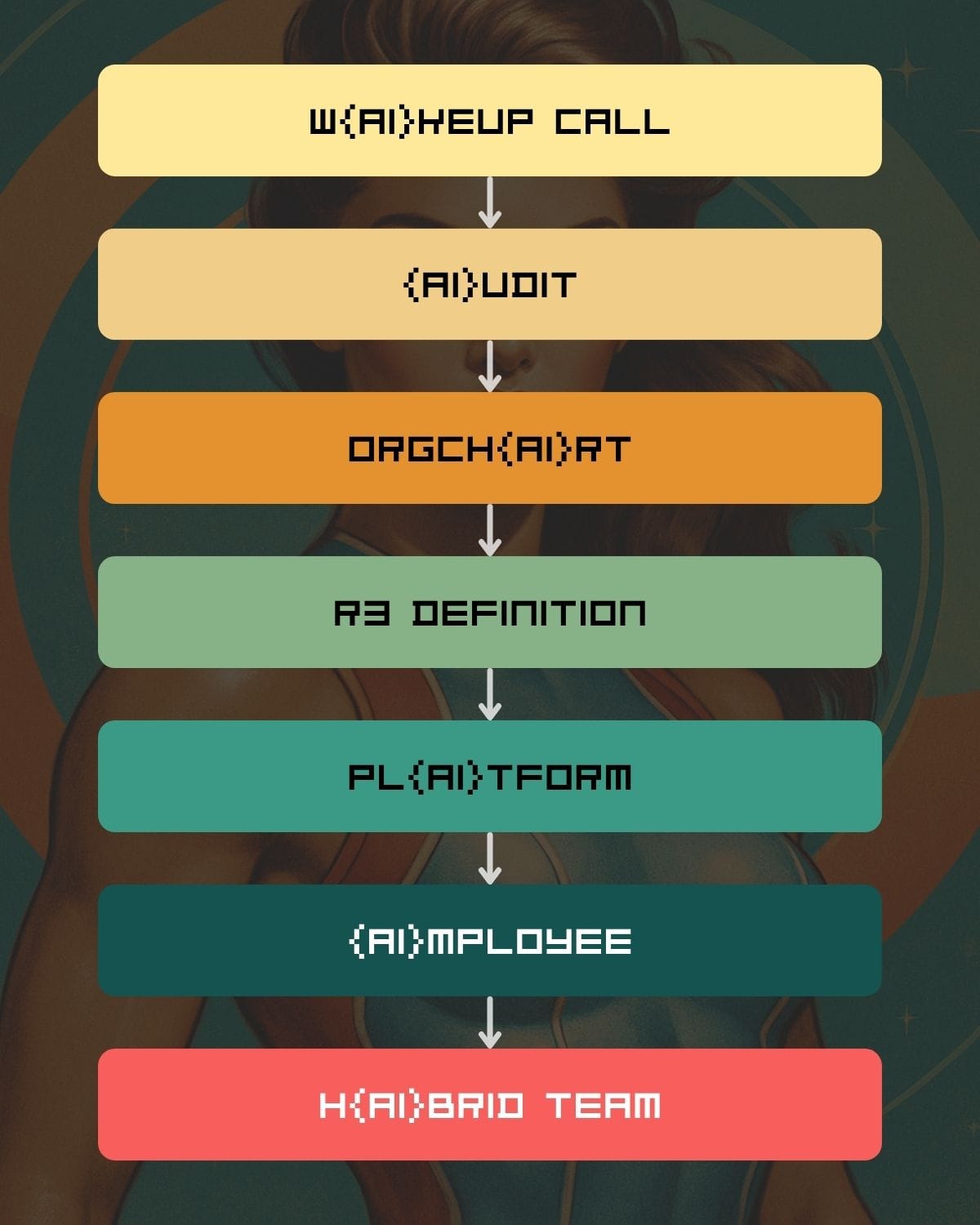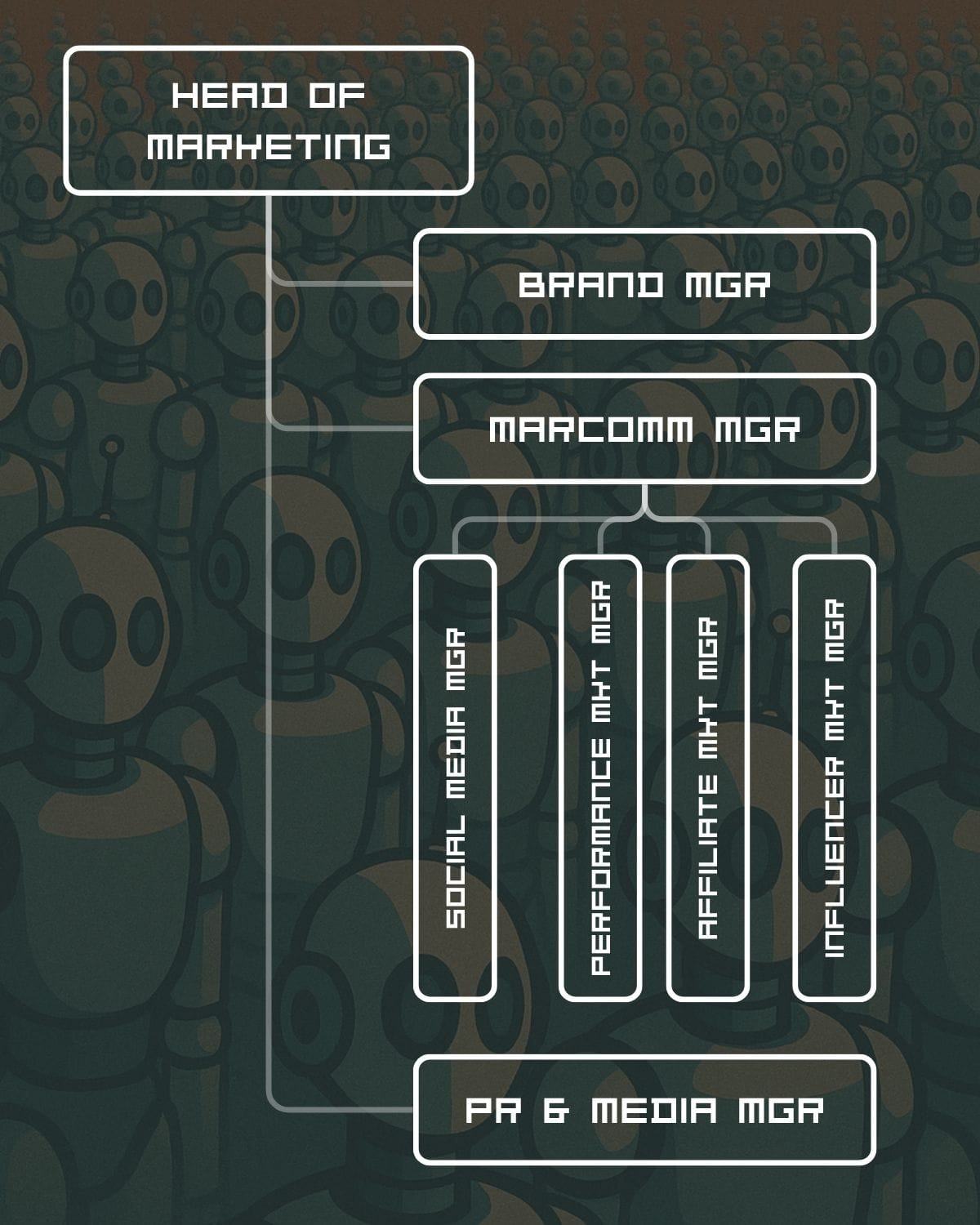The {AI}UGMENTIC Process

Building AI agents is the most prominent trend in the AI and business world right now. Every business - from solopreneurs to the big corporations want to onboard AI employees. They expect to save time and money and even make more money.
AI agents appear as solution for all the problems of the modern business environment.
95% of the AI Projects Fail
However, a recent MIT study found out that 95% of the AI implementation projects actually fail to achieve their goals. Here are some of the reasons for those failures, which the study identified:
- Lack of organizational readiness.
- Poor problem selection.
- Data quality and access.
- Skill and alignment gaps.
- Mismanaged expectations.
- Business and workflow integration issues.
- Technology mismatch.
If you look deeper, you can see that the root causes for all these issues are related not so much to the complexity of the AI technology but due to three main factors:
- Failure factor No. 1: Lack of proper planning and design of the AI implementation.
- Failure factor No. 2: Lack of organization’s preparation for the implementation.
- Failure factor No. 3: Poor communication within the organization.
The study’s insights are very important because it shows not that the AI technology is bad or not developed enough. It shows the failure of humans to manage their expectations, process and work and do the job properly.
So, if we ask ourselves: What is the first factor for success of an AI implementation project, the answers will inevitably be:
The proper planning.
…and the planning starts with the process.
Here is the 7-step process which I use every time when designing, building, deploying and onboarding an AI employee:

Here are the steps, explained in brief:
Step 1: W{AI}KEUP
We need to talk first.
What do you know about AI and automation? What do you think about it? Do you think you need it? Do you want it? Do you hate it? Are you scared of it? What are your expectations? What do you want to achieve with AI? What are the top of mind bottlenecks and problems? Are you doing something about AI adoption and AI employees onboarding? How do you think I can help you?
This conversation is extremely important. It sets the baseline. Without it, we are not going to be on the same page. At all.
Step 2: {AI}UDIT
Next, we need to dig deeper.
Depending on your organization structure and processes/team complexity, the AI transformation audit can take from a few hours to a few days.
Th goal is to study in detail and understand the following:
- Your organization’s structure and infrastructure.
- Your organization’s processes and SOPs.
- Your organization teams’ dynamics.
- Your tech stack.
- Your current level of AI adoption.
- Your bottlenecks and problems.
- Your vision and goals.
- And much more…
With all that studied and analyzed, we get to the real work.
Step 3: ORGCH{AI}RT
I know that your time (and mine as well) is a very valuable resource and I don’t want to waste it. For this reason, I approach the concept of AI automation and AI agents from a very practical perspective.
I don’t care what is trendy and hot. I care only about three things - what kind of solution will:
- Save time to my clients.
- Save money.
- Make money and produce growth.
Also, I would like to speak my clients’ language and provide solutions that fit their needs, structure and process, not just the latest gimmick of OpenAI.
So, I always start with the orgchart of the client. Here is a fragment of a Marketing Department orgchart:

My goals is to see what we have and how can we augment it, making their teams more powerful and productive with less stress and friction.
I discuss with you and analyze the orgchart and we mark the roles there with three type of tags:
- Tag 1: “To be Assisted by AI employee(s)“.
- Tag 2: “To be Augmented by AI employee(s)“.
- Tag 3: “To be Annihilated by AI employee(s)“.
“Assisted” means that we are planning to provide the humans in those selected roles with proper AI tools and training in order to help them do their job better, faster, smarter, more efficiently and gracefully.
“Augmented” is used in the sense of providing AI employee(s) to the selected role which can execute expert tasks not only to help the human on this position, but to multiply their creativity, productivity, speed and efficiency.
“Annihilated” sounds creepy, but it actually means that the particular role (or part of it) is so well structured and so inefficient for a human to do it, that it is better to be done 80-100% by an AI employee (with a mandatory human in the loop).
Those tags mark the milestones of our AI transformation and AI employees onboarding roadmap. Based on it, we prioritize which roles to start with (which ones have greatest positive impact and are faster and easier to create AI employees for.
When we select our top 3 roles/responsibilities to transform with AI, we pick one, only one, to start with.
Step 4: R3 DEFINITION
For the selected role or responsibility, we analyze in detail the three “R”:
- Role’s job description - key qualifications, responsibilities, requirements, tools.
- The Responsibilities which are part of this role.
- All the Routines that define the responsibilities.
Why is that important?
Following the {AI}UGMENTIC signature, state-of-the art methodology, a Role from the orgchart roughly corresponds to a Director AI employee, whic manages a team of AI employees.
Each of the Responsibilities corresponds to one operative AI employee - {AI}der, Consult{AI}nt or {AI}xpert.
The Routines of each responsibilities define how this responsibility should be executed. Those are the clear instructions for the respective AI employee to follow.
Step 5: PL{AI}TFORM
When we are clear about the AI employee and its definition, we need to discuss and decide on the tech stack, the platform.
There is no use of an AI employee which is developed so it to be easy for the AI automation developer to do the job.
The tech stack on/with which the AI employee is built, should cover several important requirements:
- Matching the budget of the client (or clearly justify the higher investment, if required).
- Matching the tech stack of the client (or requiring minimal adjustments).
- Matching the workflow of the client (or requiring minimal adjustments).
- Allowing us to develop the AI employee and deploy it as requested by the client.
- Built-in scalability, continuity, performance and security.
Designing the right platform is crucial. Changing it significantly later is going to be a very expensive and labor-intensive exercise.
Step 6: {AI}MPLOYEE
After all those preparatio, the time for the fun stuff has come. We follow the requirements (job description, responsibilities, routines) and build the AI employee using the approved tech stack.
The stages in development are:
- Alpha - we develop and test in detail.
- Beta - second iteration, improved, tested by the client and a limited group of users.
- Production - the AI employee is deployed on the real platform and available for use.
When we make sure that the AI employee works properly, comes the hardest part - onboarding the AI employee in the existing team.
Step 7: H{AI}BRID TEAM
The onboarding a “regular” human employee is a challenge. Doing it with an AI employee can cause way more stress than usual, for several reasons:
- Humans have different skills and tech literacy.
- They have opinions, fears, and insecurities.
- They worry AI will replace them.
- And often prefer fun over work.
AI employees aren’t simple either:
- They vary in complexity.
- They’re not autonomous.
- They look smart but aren’t.
The first step is to make sure that the human part of the team is properly trained and are on the same page in regards of AI, AI employees and the particular AI which we are trying to onboard. Thios knowledge should cover three main elements:
- General AI literacy for the team.
- AI tools skillset.
- AI employees touchpoints.
To do the onboarding successfully, all the tream members should know and be aligned on:
- How to communicate with the new AI employee.
- What can they ask and expect from it.
- What is clearly not part of this AI’s responsibilities.
- What are AI employee’s key performance indicators, how and when are they being measured and analyzed.
- What to do when a bug/issue with AI employee’s work is found and whom to communicate it with.
–
As you can see, the AI employee’s building and onboarding is a complex process. Or at least looks like one.
Try to imagine the process of “developing” and onboarding a human employee, though:
- Education: college, university, courses, certifications.
- Sourcing: job ads, research, headhunting.
- Interviews and assessments.
- Offer and negotiations.
- Onboarding.
- Performance monitoring.
- Regular evaluations.
- Conflicts resolution.
- Emotional meltdown and drama handling.
- Vacations and sick days.
- Stress, burnout, varying productivity.
- Limited working hours.
- Limited workload.
- Expensive scalability (hiring more people).
From this perspective, the AI employee building and onboarding process doesn’t seem so much complex and slow anymore?
What do you think? Which AI employee would you onboard into your team first?

Member discussion